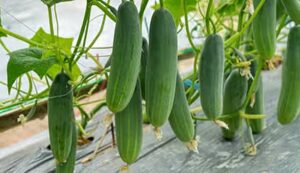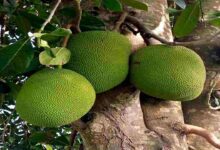Cucumber cultivation: By cultivating with this method, farmers can grow summer vegetables even in winter
Cucumber cultivation: Saharanpur farmers often enjoy engaging in a variety of agricultural practices. These days, people choose to engage in off-season farming in this sequence. Cucumber cultivation is one example. The low tunnel approach makes it simple to do so, even in the cold. The farmer receives three times the price for the produce when this farming is done in the winter. The farmer can simply maintain the temperature using the low tunnel approach.

How is cultivation carried out?
For low tunnel farming, GI (iron) bars or bamboo boards that are two to three meters long and one centimeter thick are sunk two meters apart on a semi-circular bed that is one to one and a half meters wide. A clear 25–30 micron polyethylene film covers it. This creates a tunnel that is between two and a half and three feet high. It is free from the dangers of pests and illnesses, and weather-related losses are nonexistent.
There are several advantages.
The development of plants is made easier by improved seed germination techniques. Fruits and vegetables ripen and are available ahead of schedule. On the other hand, drip irrigation is used for irrigation. Extreme heat, cold, or wet seasons are when it is most often utilized.
Farmers profit from using the low tunnel approach.
Subhash Saini, a farmer, informed the reporters that he has been growing cucumbers using the low tunnel technique for the last two years. In late November or early December, this low tunnel technique is grown. where he has begun growing cucumbers. When the tunnel is removed from this cucumber cultivation in late February, the price of this cucumber is three times more than that of other cucumbers.
The crop grown using the low tunnel approach maintains a daytime temperature of 25°C and a nighttime temperature of 15°C. When growing cucumbers, local fertilizer is applied first, followed by the burying of DAP, potash, and sulfur in a line. The crop costs 10,000 rupees per bigha when grown using the low tunnel technique. On the other hand, each bigha might save between Rs 50 and Rs 60 thousand.

